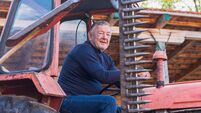Payments support €5.67bn output
The Department was obliged to issue the data under EU regulations, and in the absence of any further legal challenges, it is likely that this release is going to become an annual event.
There is undoubtedly going to be focus on those farmers in receipt of the highest payments. And, from an outsider’s perspective, the largest payments do seem obscene.
However looking beneath these figures, those very same farmers are almost without exception, carrying on Ireland’s largest farming enterprises, creating employment, supporting Ireland’s food industry, and giving work to local contractors and rents to retired farmers.
In this regard, the release of this data is one-dimensional, as no detail is given on the underlying farm enterprise, its scale, the quantity of produce created, or the employment created.
Economists describe how investment can have a multiplier effect.
This describes how for each euro of investment, the return generated can be a multiple. Indeed, some recent research has been undertaken in Ireland by Professor Alan Renwick, Professor of Agriculture and Food Economics, UCD, albeit focusing more specifically at the cattle and sheep farming sectors.
The key finding by Professor Renwick is that for each €1 of output produced on cattle farms, due to the multiplier effect, an additional €1.49 of output is generated in the Irish economy. For sheep farms, the additional direct and indirect output generated is €1.33.
Professor Renwick’s studies suggest that the €2.3bn output in 2012 from beef and sheep production, contributed over €5.67bn to overall output, and €3.23bn to GDP in the Irish economy, and it is estimated that around 45,000 jobs in the wider economy (beyond the farm and processing sectors) are supported by the cattle and sheep sectors.
Given that the national average payment is a modest €9,810, the spend on Single Farm Payment gives a good bang for its buck, supporting both a large number of farmers (over 130,0000), with knock-on benefits to both overall employment and exports.
Let us not forget that CAP funding for the Single Farm Payment is provided by the EU, and those “non-farmers” seeking to vent about the quantum of payment received by farmers should take an enlightened view that actually the more our farmers receive from the EU, then the better our economy will do, thanks to the multiplier effect quantified by Professor Renwick.
Looking down through the listings of single farm payment recipients, one concludes those farmers currently in receipt of the highest single farm payments were in the main carrying on the “right” mix of farming in those all-important reference years of 2000 to 2002.
Current payments are, in the majority of cases, strongly correlated to the activities carried on by a farmer or his or her predecessor up to 15 years ago.
Yet, some farmers carrying on broadly similar enterprises in those reference years can today have significantly different payments.
Those now losing out may have been established farmers 15 years ago who chose to specialise in fattening heifers (as opposed to bullocks), or farmers who sold cattle with premiums intact (or “punches” as they were called), or farmers who chose to sell cattle through the mart as opposed to directly to the factory.
In all of these cases, the farmers now feel they have been short-changed, by the initial decoupling of payments back in 2005, and repeated in this latest round of CAP reforms, where convergence has not delivered equal pay for equal work.
As a result, the publication of payments causes some fault lines within the farming community, as well as in the general public.
Such payments, based as they are on historic activity, create their own difficulties, but the alternatives — such as linking payments directly to land farmed — have been criticised as potentially driving up land rent and land purchase prices.
Undoubtedly, a new round of winners and losers will be created in the next round of CAP reform, expected to take place in 2019.
Whether the new CAP payments will be weighted towards an individual’s farmer production, or indeed the farmer’s overall contribution of the economy, remains to be seen.


